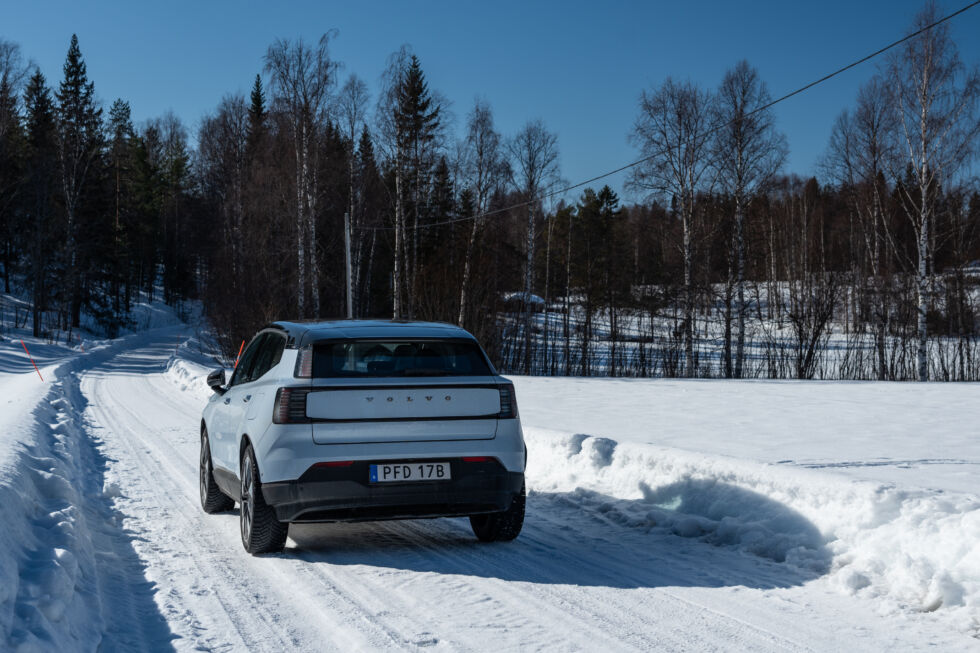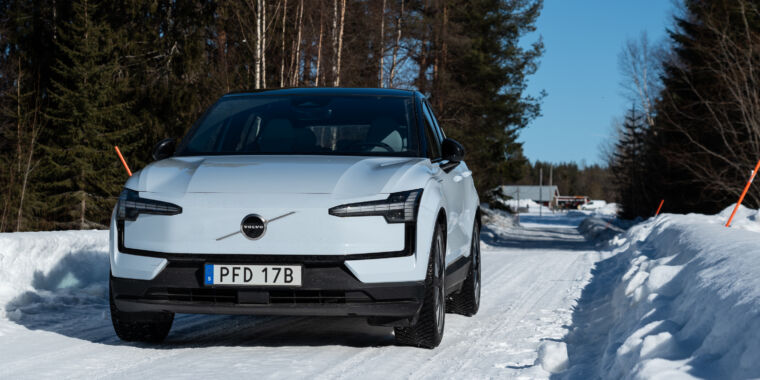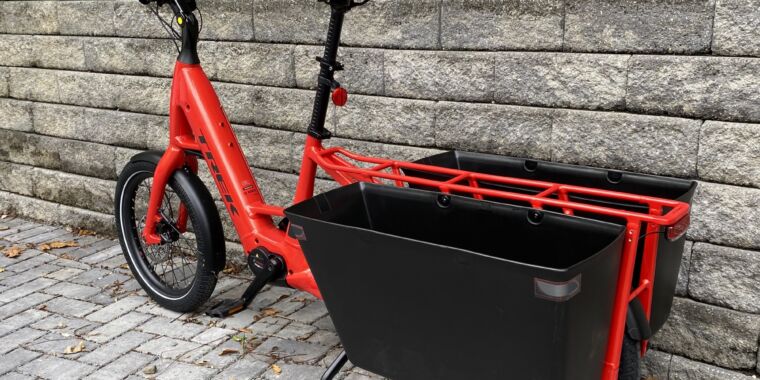Tim Stevens
Rear-wheel drive cars long ago earned a reputation for being a bit of a nightmare to live with in snowy, icy conditions. That’s partly why Volvo stopped making the things in the 1990s, so it was a surprise that the brand returned to rear-drive for its latest EVs, like its upcoming subcompact SUV, the EX30.
Why the throwback layout? Next-generation stability and traction-control systems, aided by the precise torque delivery of electric motors, allow for advanced modulation of power and braking that would have been impossible on those ’90s icons. To see just how well Volvo’s engineers succeeded at the task, I headed to northern Sweden to catch the tail of an Arctic winter and see whether this return to RWD was a success.
The driven wheel dilemma
Thanks to inertia, having the engine of a car drive the rear wheels actually provides the acceleration. When you accelerate, the car’s mass effectively shifts rearward. That additional weight on the rear wheels gives them more grip—and gives you more speed.
This works whether you’re on dry or icy roads, but when grip is at a premium, turning gets more complicated. If you get too eager with the accelerator in a rear-wheel-drive (RWD) car, trying to accelerate out of a corner, those rear wheels tend to spin. This kicks the car sideways, which, if you’re not ready for it, results in an unexpected spin.

Tim Stevens
That same situation is much safer in a front-wheel-drive (FWD) car. Accelerate too hard in a corner, and the front wheels spin, causing the nose of the vehicle to slide wide. This is easier to catch and correct from behind the steering wheel, traditionally making these cars safer in slippery conditions.
All-wheel drive (AWD) theoretically gives the best of both worlds if you don’t mind paying a little extra for the privilege and getting worse fuel economy along the way.
Given that safety is Volvo’s overriding priority, it makes sense that the brand switched to focus entirely on FWD and AWD cars in the late 1990s. Today, the latest stability control systems make it safe again.
Systems to the rescue
To make RWD work on the new EX30 SUV, Volvo relies on a combination of advanced stability and traction control, again aided by the precise control offered by electric motors.
Traction control is a pretty straightforward thing, a system that reduces the power provided by the electric motor or motors to prevent wheelspin. Stability control, however, is a bit more nuanced. It works with the traction control and also applies brakes to individual wheels to help the car turn. The ultimate goal is to keep the SUV stable in decidedly unstable conditions.

Volvo
You can read our initial impressions of Volvo’s impressive $34,950 SUV here. That drive took place in sunny Portugal on dry roads. My turn at the wheel took place in snowy Sweden.
The snow and the ice are perfect places to test out those electronic smarts and sensors that Volvo baked into the new EX30. Their impact was most clearly felt in the RWD flavor of the subcompact SUV. This single-motor version makes 268 hp plus 253 lb-ft of torque. As an EV, all that power is delivered instantly to the wheels, which would make an average RWD car a real handful.
On glare ice, no less on a frozen lake, the RWD EX30 pulled away cleanly from a complete stop. Even with the accelerator on the floor, there was only a hint of wheelspin before the traction-control system cut power to provide a smooth, steady getaway.
Steady, yes, but not particularly swift. With so little grip and only two wheels driven, patience is required when driving the RWD EX30 on ice. That’s not the case with the dual-motor AWD version. That EX30 absolutely launched forward, even on ice. The traction control again kept wheelspin to basically nothing, but twice the grip meant significantly more acceleration.




